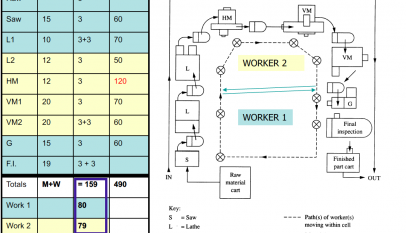JIT manufacturing
In the mid twentieth century, the United States assembled a considerable measure of extensive distribution centers. That is the reason for the vast majority of the twentieth century, you see the U.S. depending on substantial stock assembling.
An auto organization could fabricate one thousand autos, and after that the autos would sit on parking garages until the point that somebody chooses to get them.
However, this kind of framework doesn’t function admirably in case you’re an island country like Japan. For one, space is substantially more hard to discover. It’s additionally exorbitant for all the distinctive makers to purchase substantial distribution centers.
Keep in mind that the maker needs to convey the whole cost of their stock, so an auto producer would assemble 1,000 autos and after that may need to hold up a very long time to recover their speculation.
That is the reason in the 1960s, Japanese organizations began testing with something many refer to as without a moment to spare assembling. Here a maker would make autos in substantially littler groups. So rather than 1,000 autos, a Japanese maker may very well make 100.
At that point they would take these little clusters and after that send them specifically to auto dealerships. They need to stress over putting away them for quite a long time in a parking area. Preferably, this framework abbreviated the length amongst auto and money. It would go ideal from the maker to the dealership.
The client may even get it the following day so the maker shoulders less of the venture. That is the reason it’s called Just-In-Time time. The item arrives just in time for the client. The framework works so well that the Japanese automaker Toyota adjusted it to work with their preparations framework.
They changed it and began to make another adaptation which they called lean assembling. One of the center thoughts was that rather than pushing items into dealerships, they would rather have the client pull the auto through the framework.
So when the client purchases up to 100 autos, that the flag the maker needs to assemble another group.
The possibility of a force framework vs. a push framework turned into the focal thought in kanban.
Kanban blends lean assembling with a training that was utilized in Japanese supermarkets.
Indeed, the word KANBAN is Japanese for “card you can see”.
The kanban card was a flag to the supermarket that they expected to pull in new items. The framework utilizes these kanban cards as an approach to flag when you expected to pull more items into the pipeline. So if there were 40 jars of soup what’s more, they were down to 10 jars, they would put a red kanban card alongside the soup. At that point the director would experience the store what’s more, reorder anything that had a red card.
The Toyota creation framework blended these kanban rehearses with lean assembling. They could utilize these cards to appear at the point when the auto stock was getting low. Toyota may require 100 auto seats to fabricate their autos, so they may put a kanban card alongside the auto seats when they achieved a basic level.
That way Toyota was pulling new auto seats from their producer. This additionally shielded Toyota from having to store additional seats on the assembly plant. It helped the auto situate producer ensure they’re building precisely what the client required.
In the mid 1990s, an expert named Don Reinertsen began to compose about utilizing these same ideas for item improvement. Rather than utilizing lean assembling to fabricate autos, he said you could utilize it to convey items. The trap was to convey them in little bunches also, do your best to oversee this bunch or line estimate. The thought was to keep the lines little also, to limit the time that the item experiences your framework. That way you could anticipate what number of you require to get to the completed item.

















